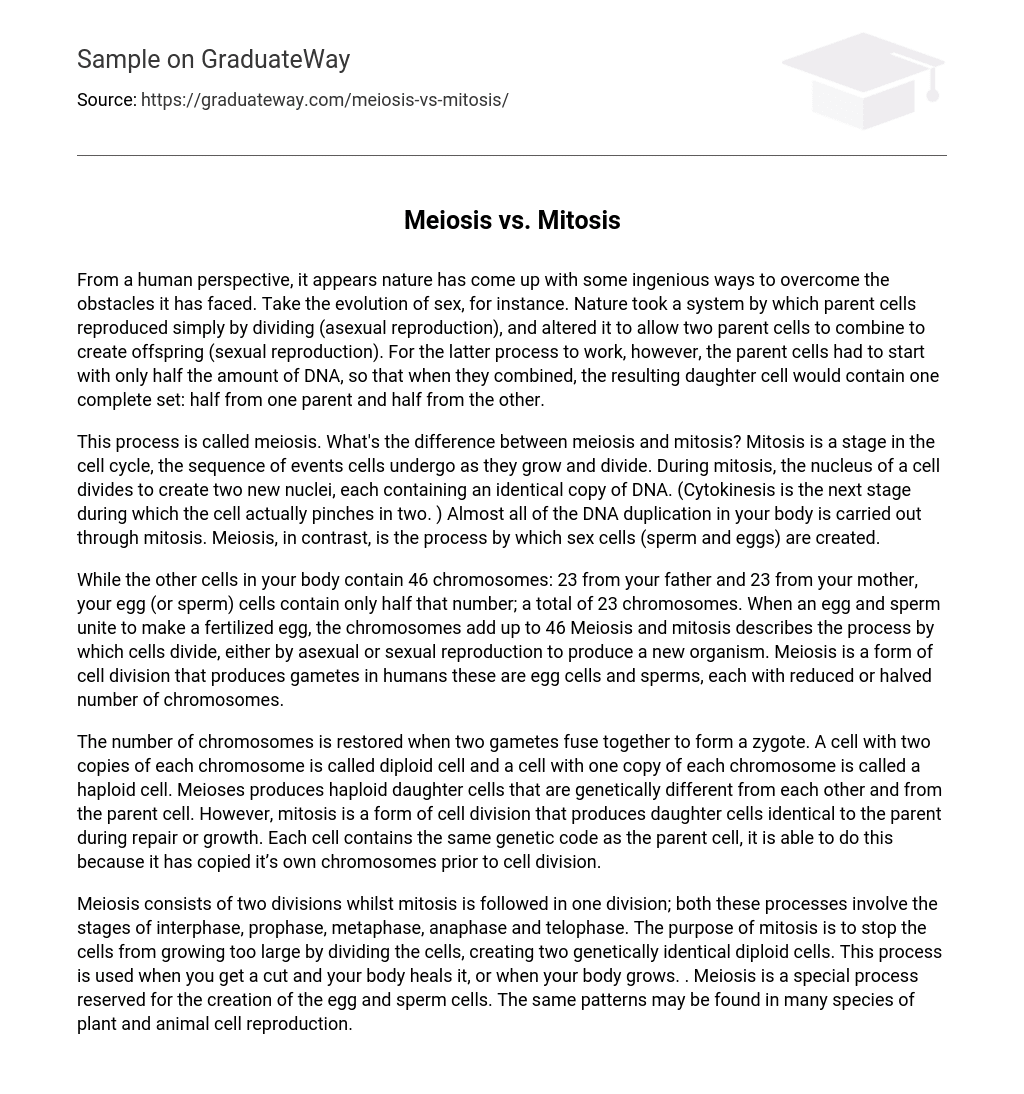From a human perspective, it appears nature has come up with some ingenious ways to overcome the obstacles it has faced. Take the evolution of sex, for instance. Nature took a system by which parent cells reproduced simply by dividing (asexual reproduction), and altered it to allow two parent cells to combine to create offspring (sexual reproduction). For the latter process to work, however, the parent cells had to start with only half the amount of DNA, so that when they combined, the resulting daughter cell would contain one complete set: half from one parent and half from the other.
This process is called meiosis. What’s the difference between meiosis and mitosis? Mitosis is a stage in the cell cycle, the sequence of events cells undergo as they grow and divide. During mitosis, the nucleus of a cell divides to create two new nuclei, each containing an identical copy of DNA. (Cytokinesis is the next stage during which the cell actually pinches in two. ) Almost all of the DNA duplication in your body is carried out through mitosis. Meiosis, in contrast, is the process by which sex cells (sperm and eggs) are created.
While the other cells in your body contain 46 chromosomes: 23 from your father and 23 from your mother, your egg (or sperm) cells contain only half that number; a total of 23 chromosomes. When an egg and sperm unite to make a fertilized egg, the chromosomes add up to 46 Meiosis and mitosis describes the process by which cells divide, either by asexual or sexual reproduction to produce a new organism. Meiosis is a form of cell division that produces gametes in humans these are egg cells and sperms, each with reduced or halved number of chromosomes.
The number of chromosomes is restored when two gametes fuse together to form a zygote. A cell with two copies of each chromosome is called diploid cell and a cell with one copy of each chromosome is called a haploid cell. Meioses produces haploid daughter cells that are genetically different from each other and from the parent cell. However, mitosis is a form of cell division that produces daughter cells identical to the parent during repair or growth. Each cell contains the same genetic code as the parent cell, it is able to do this because it has copied it’s own chromosomes prior to cell division.
Meiosis consists of two divisions whilst mitosis is followed in one division; both these processes involve the stages of interphase, prophase, metaphase, anaphase and telophase. The purpose of mitosis is to stop the cells from growing too large by dividing the cells, creating two genetically identical diploid cells. This process is used when you get a cut and your body heals it, or when your body grows. . Meiosis is a special process reserved for the creation of the egg and sperm cells. The same patterns may be found in many species of plant and animal cell reproduction.





